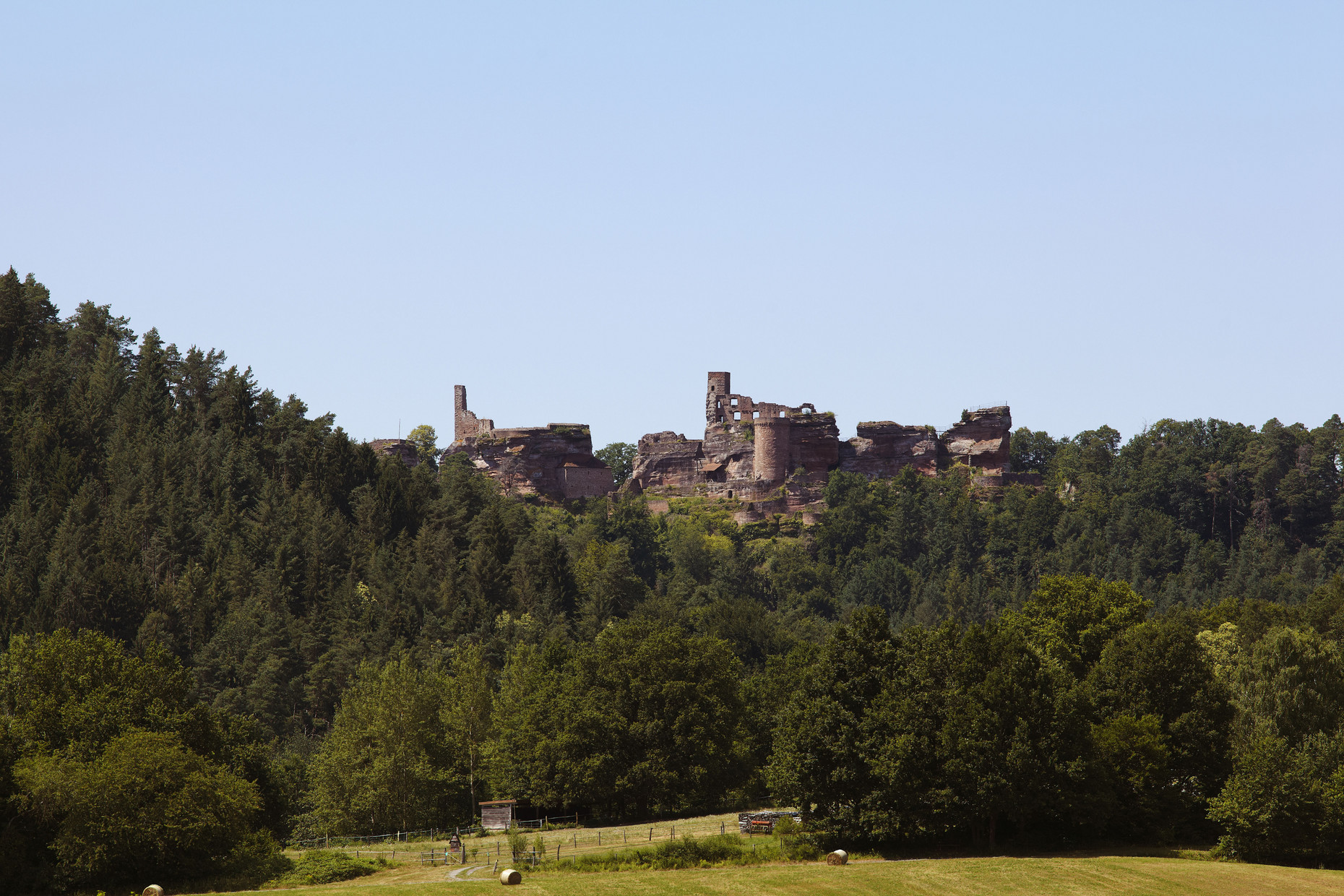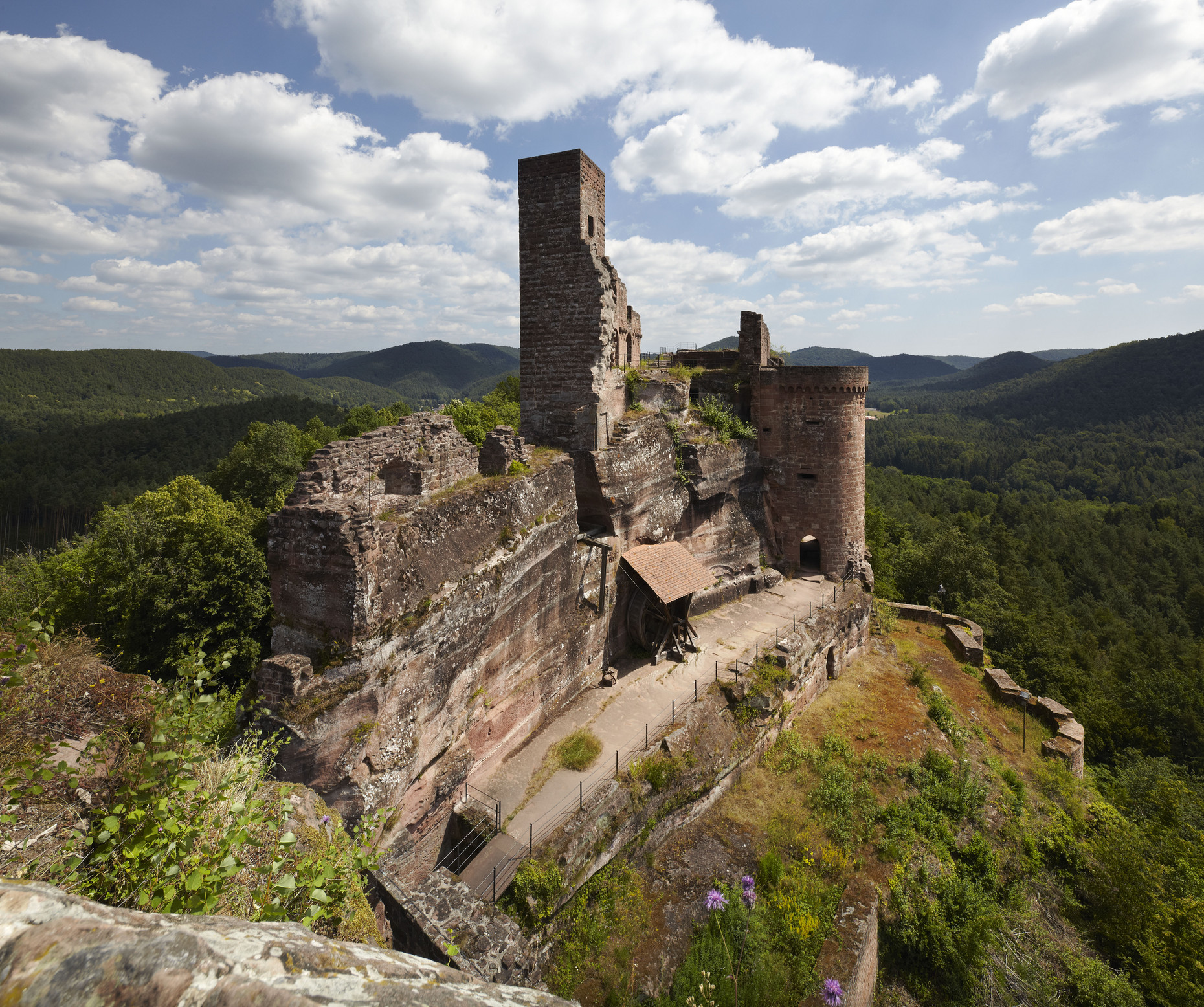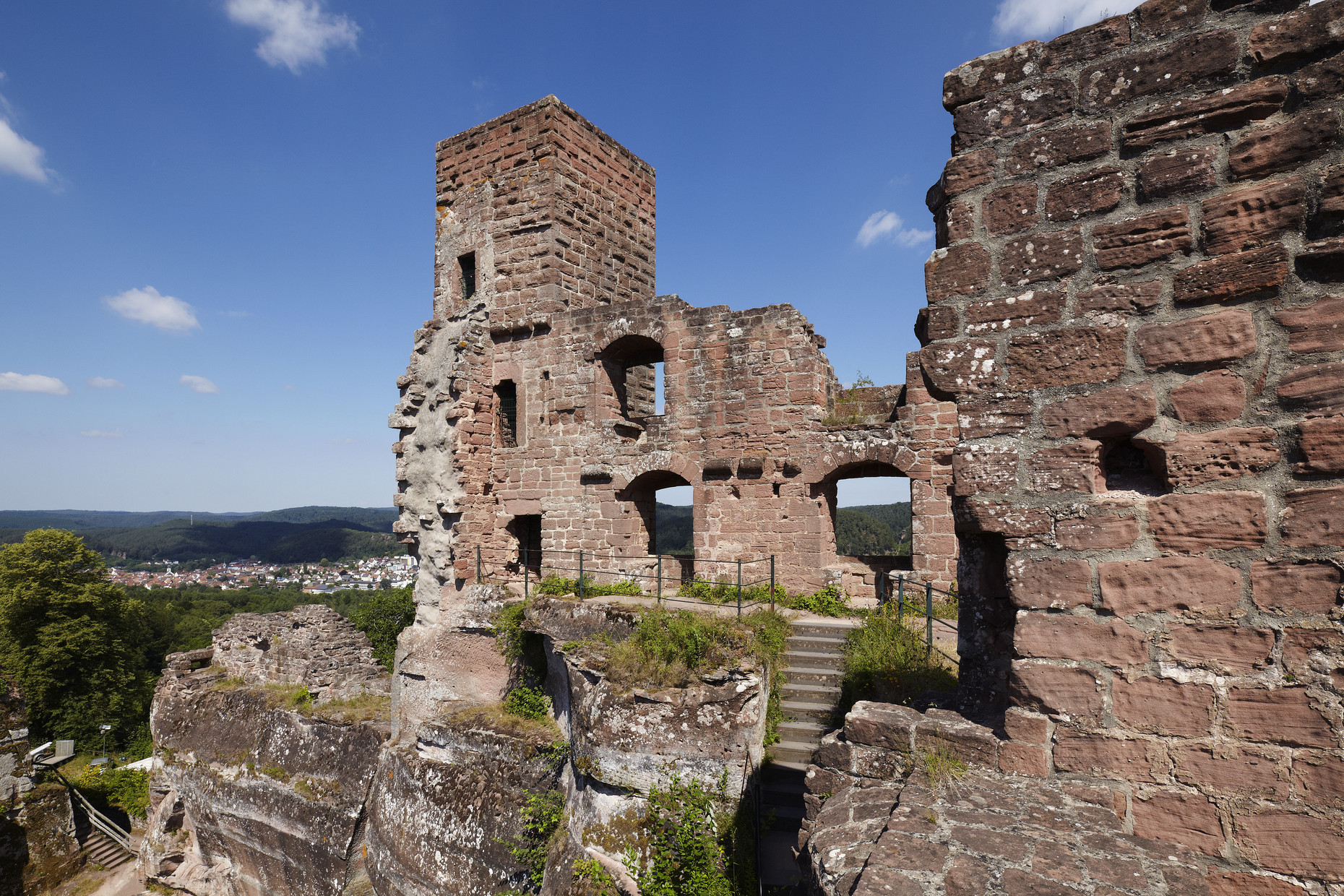Welcome to the Dahn Castles
The Altdahn, Grafendahn and Tanstein castles were built in the 12th and 13th centuries on what was then a sandstone cliff. The typical clifftop castles are among the largest castle complexes in the Palatinate. Lots of steps lead you up to the sites of various battles. The mighty turrets and gate tower of Altdahn and the remains of the shield wall of Grafendahn are evidence of the turbulence of the times. Rocky paths link the castle buildings to the castle keep. From there, there are breathtaking views over the castle complex and as far as the Vosges mountains.
Current opening hours can be found here.
Admission ist free.
Please inform yourself about current weather warnings before your visit.
Address
Dahner Burgen
66994 Dahn
Contact
bsa(at)gdke.rlp.de
Dahn Castles are a historical site of the Generaldirektion Kulturelles Erbe Rheinland-Pfalz (General Directorate for Cultural Heritage Rhineland‑Palatinate), www.gdke.rlp.de
Regrettably, as it is a historic site, there is no disabled access to the castle ruins. Thank you for your understanding.
The three Dahn group castles of Alt-Dahn, Grafendahn and Tanstein were built one after another on a sandstone cliff consisting of five rocks. They form a particularly impressive ensemble of the rock castles so common in the southern Palatinate Forest.
The exact construction date of the castles of Dahn is unknown, but it is assumed that Tanstein (in the south-west) is the oldest of the three and was founded in the 12th or early 13th century. Alt-Dahn (in the northeast) followed in the late 13th century and shortly afterwards Grafendahn, located on the centre rock.
From the very beginning, the Dahn castles were inhabited by the Knights of Dahn. As imperial ministers, they initially owed fealty directly to the king, but from the middle of the 13th century were liegemen of the Bishop of Speyer. Due to a castle truce concluded in 1288 it is known that four knights and their families were already living on the castle hill at this time. For various reasons, however, the Dahns were not the only inhabitants; at times, only parts of the castle remained in their possession.
The late Middle Ages were characterised by several fierce feuds, sieges, conquests and (partial) destruction of the castle group. In the course of the 17th century, the castles of Alt-Dahn and Tanstein fell into disrepair or were already uninhabitable. Only Grafendahn was inhabited for longer, first by the Fleckensteins and later by the Barons of Waldenburg. Since the 20th century, the castle ruins have been secured in several stages and extensively restored.
Today, mighty gate and defence towers, impressive walls and numerous cisterns and wells still give a good impression of the former size of the fortifications. The weathered and jagged sandstone rocks are not only the substructure of the castles, but – as is typical of rock castles – are also incorporated into the defence system. Chambers, corridors and staircases are carved directly out of the stone.
There is a car park below the castle. It is about a 10-minute uphill walk.
Tourist-Information
Dahner Felsenland
Schulstraße 29
66994 Dahn
Phone +49 6391 919600
info(at)dahner-felsenland.de
www.dahner-felsenland.net
Pfalz.Touristik
Martin-Luther-Straße 69
67433 Neustadt an der Weinstraße
Phone +49 6321 39160
info(at)pfalz-touristik.de
www.pfalz.de/en


